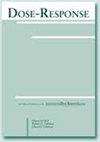Cefepime Dosing Requirements in Elderly Patients Attended in the Emergency Rooms
IF 2.3
4区 医学
Q3 PHARMACOLOGY & PHARMACY
引用次数: 1
Abstract
Objective This study aimed to assess the probability of reaching an adequate pharmacokinetic/pharmacodynamic (pK/pD) index for different cefepime dosages in frail patients with bacteremia treated in the emergency room. Methods Simulation study based on Gram-negative bacterial strains that cause bacteremia. The probability of reaching a time above the minimum inhibitory concentration (MIC) at 50% and 100% dosing intervals (fT > 50 and fT > 80% MIC) was assessed for two different renal clearance intervals. Results One hundred twenty nine strains were collected, the predominant species being Escherichia coli (n = 83 [64.3%]). In patients with a ClCr of 30 mL/min, an fT > 50% MIC was reached in more than 90% of the simulations. However, a dose of at least 1 g every 12 h must be administered to reach an fT > 80% MIC. In patients with a ClCr of 30–60 mL/min, the probability of reaching an fT > 50% MIC was higher than 90% with doses of 1 g every 8 h or more, but this value was not reached in > 90% simulations for any of the doses tested in this study. Conclusions Standard cefepime dosing can reach an adequate PK/PD index in frail patients. Nevertheless, a high dose or extended infusion is necessary to reach an fT > 80% MIC in patients with a ClCr > 60 mL/min.急诊老年患者头孢吡肟的剂量要求
目的本研究旨在评估急诊虚弱菌血症患者不同剂量头孢吡肟达到适当药代动力学/药效学(pK/pD)指数的可能性。方法对引起菌血症的革兰氏阴性菌株进行模拟研究。在50%和100%给药间隔(fT > 50%和fT > 80% MIC)达到最小抑制浓度(MIC)以上时间的概率被评估为两个不同的肾清除率间隔。结果共检出病原菌129株,优势种为大肠杆菌83株(64.3%)。在ClCr为30 mL/min的患者中,超过90%的模拟达到了50%的MIC。然而,必须每12小时给予至少1 g的剂量才能达到80%的MIC。在ClCr为30-60 mL/min的患者中,每8 h或更长时间给药1 g时,达到> 50% MIC的概率高于90%,但在本研究中测试的任何剂量的> 90%模拟中均未达到该值。结论标准剂量头孢吡肟可使体弱患者达到适当的PK/PD指数。然而,在ClCr >为60 mL/min的患者中,需要高剂量或延长输注时间才能达到fT > 80%的MIC。
本文章由计算机程序翻译,如有差异,请以英文原文为准。
求助全文
约1分钟内获得全文
求助全文
来源期刊

Dose-Response
PHARMACOLOGY & PHARMACY-RADIOLOGY, NUCLEAR MEDICINE & MEDICAL IMAGING
CiteScore
4.90
自引率
4.00%
发文量
140
审稿时长
>12 weeks
期刊介绍:
Dose-Response is an open access peer-reviewed online journal publishing original findings and commentaries on the occurrence of dose-response relationships across a broad range of disciplines. Particular interest focuses on experimental evidence providing mechanistic understanding of nonlinear dose-response relationships.
 求助内容:
求助内容: 应助结果提醒方式:
应助结果提醒方式:


